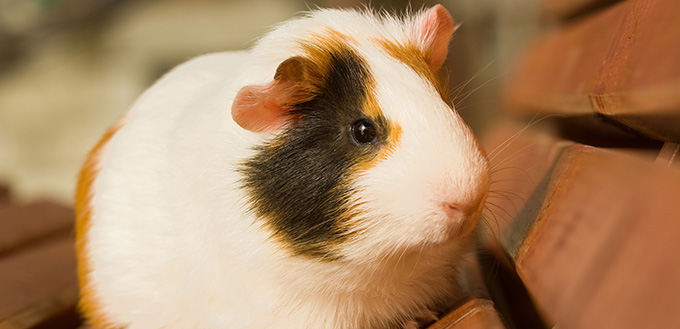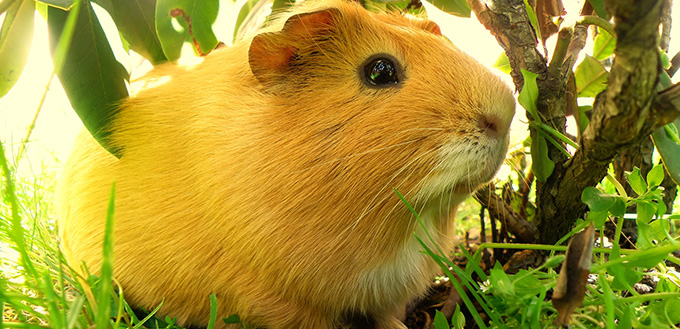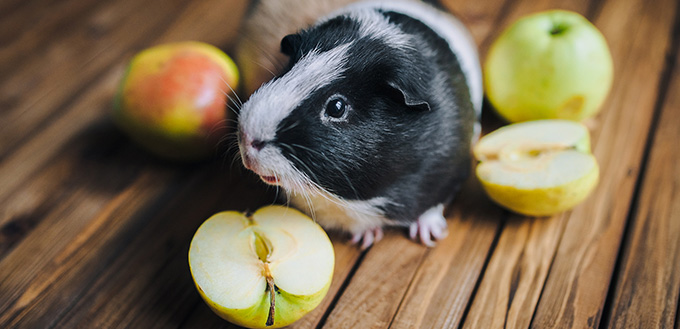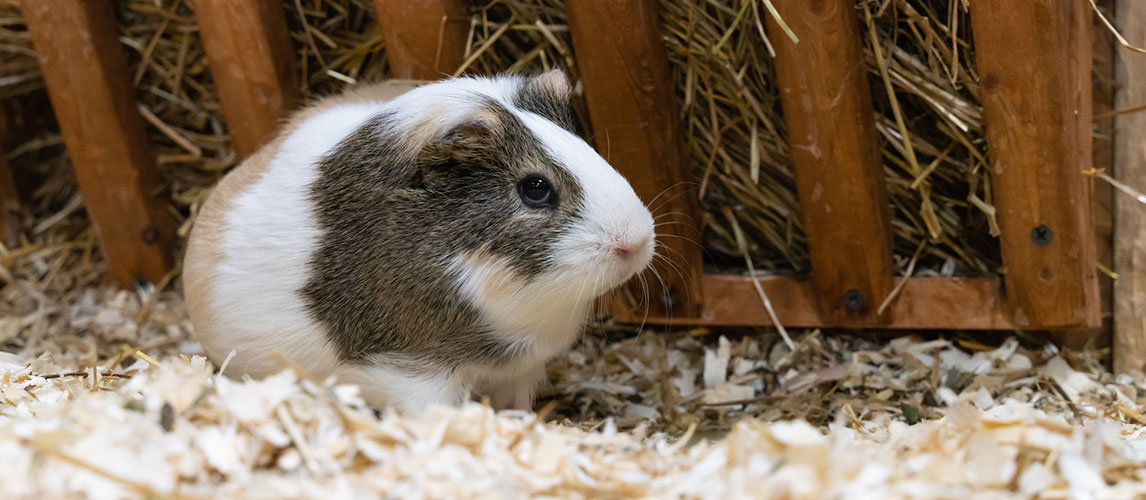If you’re planning on giving your kid a pet, there’s nothing better than a guinea pig. These large, hairy rodents are quite easy to care for and can provide enough challenge for your kid to learn the responsibilities of being a pet parent. Cavies, as guinea pigs are otherwise known, are intelligent and fascinating pets. And when these furry creatures are handled correctly, they can be your kid’s most awesome and friendliest pet. The trick, therefore, is learning how to properly care for them.
Getting to Know the Guinea Pig
The Guinea pig has been around for millennia. In fact, the very first known domesticated cavy was documented to have existed as early as 5000 BC. Unfortunately, these creatures were first domesticated not as pets, but rather as a food source for the peoples of the Andes in present-day Bolivia, Columbia, Peru, and Ecuador. Ancient Peruvians known as the Moche worshipped guinea-pig like creatures.
The modern Guinea pig can be traced back to the breeds that were the product of selective breeding that started to occur between 1200 AD and 1532 AD, although the animal was primarily sought for its meat. In addition to being used as food source for the population, guinea pigs were also used in a number of folkloric traditions, especially in healing rituals. Folk doctors rubbed the guinea pigs on the bodies of sick individuals to help diagnose typhus, rheumatism, arthritis, and even jaundice.
With the discovery of the Americas in the 15th century and the eventual influx of Europeans into the continent in the following century, many of the guinea pigs were brought to Europe by returning English, Dutch, and Spanish traders. This paved the way to the development of the animal as an exotic pet with Queen Elizabeth I being acknowledged as one of the most popular owners of pet guinea pigs.
Today, the guinea pig is one of the most adorable pets that families own. There are also Cavy associations and clubs that are dedicated to advancing the breeding practices of the pet while providing a more formal venue upon which these pets can be showcased in a manner that is similar to dog and cat shows. In the US, cavy fanciers have the American Cavy Breeders Association. There are also national cavy associations in the United Kingdom, Australia, and New Zealand.

Quick Facts about the Guinea Pig
Here are other interesting facts every newbie pet parent of Guinea pigs needs to know.
- Guinea pigs come in three types: American or English, Abyssinian, and Peruvian. The American is defined by its smooth, short coat. The Abyssinian has wiry coat that comes with hair that can form swirls like rosettes. Peruvian guinea pigs, on the other hand, have long, silky straight hair.
- Despite its name, the Guinea pig originated from the Andes in South America and not from the region in West Africa known as Guinea.
- It is also not a member of the pig family (Suidae), but rather a member of the rodent family of Cavidae. No wonder they are called ‘cavies’.
- There are 8 species of cavies, but only 1 is considered and kept as a pet.
- A male guinea pig is called a ‘boar’ while a female cavy is called a ‘sow’. Baby cavies are called ‘pups’.
- Pups can already open their eyes even though they are still inside their mother’s womb. They can already ‘see’ as early as 14 days before being born.
- Wild cavies live in ‘herds’ which is similar to a lion’s pride with only one boar looking after several sows.
- Cavies cannot produce or synthesize vitamin C. As such, this should be supplemented in the cavy’s diet.
- The teeth of cavies are continuously growing. Chewing is, thus, a fundamental requirement so that their teeth will not grow too long.
- On the average, guinea pigs have a lifespan of 8 years; although the current Guinness World Record holder is that of a cavy that lived for 14 years and 10.5 months.
- Cavies have peculiar feet. The front feet come with 4 toes while the hind feet only have 3 toes.
- Guinea pigs are very prolific runners. A 3-hour old baby cavy can already run.
- A cavy will have 5 different types of fur; except for the Skinny pig which, as the name implies, doesn’t have hair.
- Cavies are also known as furry popcorns. When excited, they perform little hops that resemble corn kernels popping from the kettle.
- Guinea pigs are diurnal, although majority of them are crepuscular. Diurnal cavies are mostly active during the day while crepuscular cavies are mostly active in the early evening and early morning.
- A cavy can communicate with another cavy by making a series of purrs, chirps, and/or squeaks.
- A healthy cavy can weigh between 1.5 and 2.5 lbs, often depending on the breed or type.
- They can grow from 8 inches to 10 inches long.

Behavior and Temperament of Guinea Pigs
Cavies are intelligent rodents. They can easily master complex paths by simply following the scent of food at the end of the tunnel maze. These critters have been known to display remarkable memory especially when it comes to the placement of food. They can easily run through the maze in the shortest and easiest path possible to reach their goal.
Guinea pigs are excellent jumpers, yet are very poor when it comes to climbing. They are easily startled as well. When they sense danger, cavies can execute very rapid, darting movements to evade their predator. In some cases, however, they can freeze completely still. If there is a large group of cavies and they sense a predator coming, they will run in different directions, not in a particular one. This can confuse the predator.
Cavies are known for being social animals. They don’t like living alone. As such, first-time guinea pig owners are always advised to bring home a pair instead of just one. When it comes to pairs, guinea pigs do well with same-sex, preferably both female. As we have already pointed out in our ‘quick facts’, they live in herds in the wild whereby only one boar should be in a herd of several sows. It is for this reason that you should never get two males for pets as they can try to compete against each other for dominance. This can be minimized, however, if they are neutered. Just the same, it is best to get two female cavies instead of a pair of male guinea pigs.
It is still possible to bring home a single cavy as long as you can promise that you will interact with it often. Nobody likes being caged and be left out.
Guinea pigs, when handled correctly as pups, can grow to become really friendly furry pets. They seldom bite, scratch, or nip especially if they have been accustomed to being picked up, cuddled, and carried by their owners. While they do love being cuddled, you should always handle them with care. They may try to escape their cages, but their desire is not as intense as hamsters. They will do perfectly fine living in their home.
When socialized early in their lives, cavies can be allowed to walk freely in your garden or even inside your house. Just make sure that there are no other pets in the house that may be considered as predators. They show remarkable curiosity and will never hesitate to explore the world outside their cage. As long as the environment is familiar to them or is considered safe by them, they will happily explore.
Did you know that cavies are like dogs, too? Cavies that have grown fond of their owners learn to whistle whenever they see their owners.
Related Post: How to Clean a Guinea Pig Cage
Caring for a Guinea Pig
Now, let’s get to the more serious part: how to properly care for your guinea pig.
- Shelter
At the very least, guinea pigs should be given ample space to move about, play, and do their business. Remember, this is not a dog that you can walk outside your home to defecate or urinate or both. So a large size of enclosure is best. At the very minimum, the cage for a guinea pig should be 30 inches wide, 36 inches long, and 18 inches high. This is the smallest dimension of a cage that you can put a cavy in. Steer clear of cages with wire mesh floors as cavies can hurt their feet. Don’t use fish tanks either as these don’t provide adequate ventilation. Stainless steel dog and cat crates should do just fine.
Always put high-quality hay in their cage as this serves not only as your cavy’s snack, but also for nesting. Fabrics, cedar chips, and sawdust should never be used as these can cause a number of health problems in your cavy. For their bedding, high quality ink-free paper or hardwood shavings can be used.
Related Post: Best Guinea Pig Cages
Cavy accessories should always be considered. However, you have to be careful to choose only those made of non-toxic materials. Cavies love to chew as a means of keeping their teeth from growing too long. Gnawing logs, climbing platforms, tunnels, gnaw-resistant food bowl, and water bottle should always be made of pet-safe materials.
It is also critical to maintain the room temperature in the area where you are going to place your cavy in. It should be at least 65 degrees but never more than 75 degrees Fahrenheit. This is to help make sure they don’t develop respiratory diseases.
Wondering How to Treat a Constipated Guinea Pig? Check out our recent article to find out!

- Food and Water
Cavies are vegetarians or herbivores. It is critical that they be given fresh supply of high-quality hay and occasional leafy vegetables and fruits. Fibrous foods and leafy greens are important since they need ‘harder’ foods to help wear down the cavy’s teeth. Kale and cabbage are always excellent choices for cavies. Don’t forget to treat your cavy with slices of melon and unseeded and decored apples.
An important consideration in the cavy’s diet is its inability to synthesize vitamin C. It is for this reason that cavies require vitamin C supplementation. They need about 30 to 50 mg of this vitamin every day. This can come from supplements or from vegetables or fruits that are naturally high in this nutrient.
All creatures need water. Using water bottle is better than a bowl as the water in the former doesn’t easily get contaminated. It won’t spill, too.
- Grooming
If you have a Peruvian or even an Abyssinian guinea pig, you’d also want to think about maintaining its coat. This is especially the case for the Peruvian because of its long, silky, and straight hair being one of most beautiful things about this pet. You need to brush the coat at least once a week. They don’t really need a bath, but will appreciate a good spot cleaning with unscented baby wipes. If you have a Skinny pig, you need to apply aloe-based lotion onto its skin.
Your cavy doesn’t need dental hygiene, although you need to give it something hard yet safe to chew on so that its teeth won’t grow excessively long. Trimming its nails may also be necessary so it’s best to inspect this part of its body from time to time.
- Health
A healthy guinea pig is sociable, active, and alert. It often communicates by squeaking. If it becomes lethargic, has labored breathing, shows diarrhea or unusual hair loss, then there must be a problem.
Some of the more common health issues among cavies include diarrhea, malocclusion, mite and lice infestation, ringworm infection, respiratory tract infections, and scurvy. These health conditions should be carefully evaluated by your vet so that the appropriate treatment can be administered.
Guinea pigs are also sensitive to heat. Ambient temperatures that are higher than 90 degrees Fahrenheit can cause hyperthermia and death. The same is true in relatively dry and overly humid environments. They thrive well in areas where the humidity is between 30 and 70 percent.
Caring for a guinea pig can be one of the most rewarding experiences you can ever have. Their sociable, friendly, and intelligent nature makes them great pets to begin with.
You may also like our lasted article: Hamster vs Guinea Pig – Which Pet Is The Right Choice For Me?
Sources:
- Guinea pigs: The Right Pet For You?, The Humane Society
- How Long Do Guinea Pigs Live as Pets?, WebMD
- How to Bathe a Guinea Pig, HowStuffWorks
- Guinea Pig Care, Animal Humane Society






